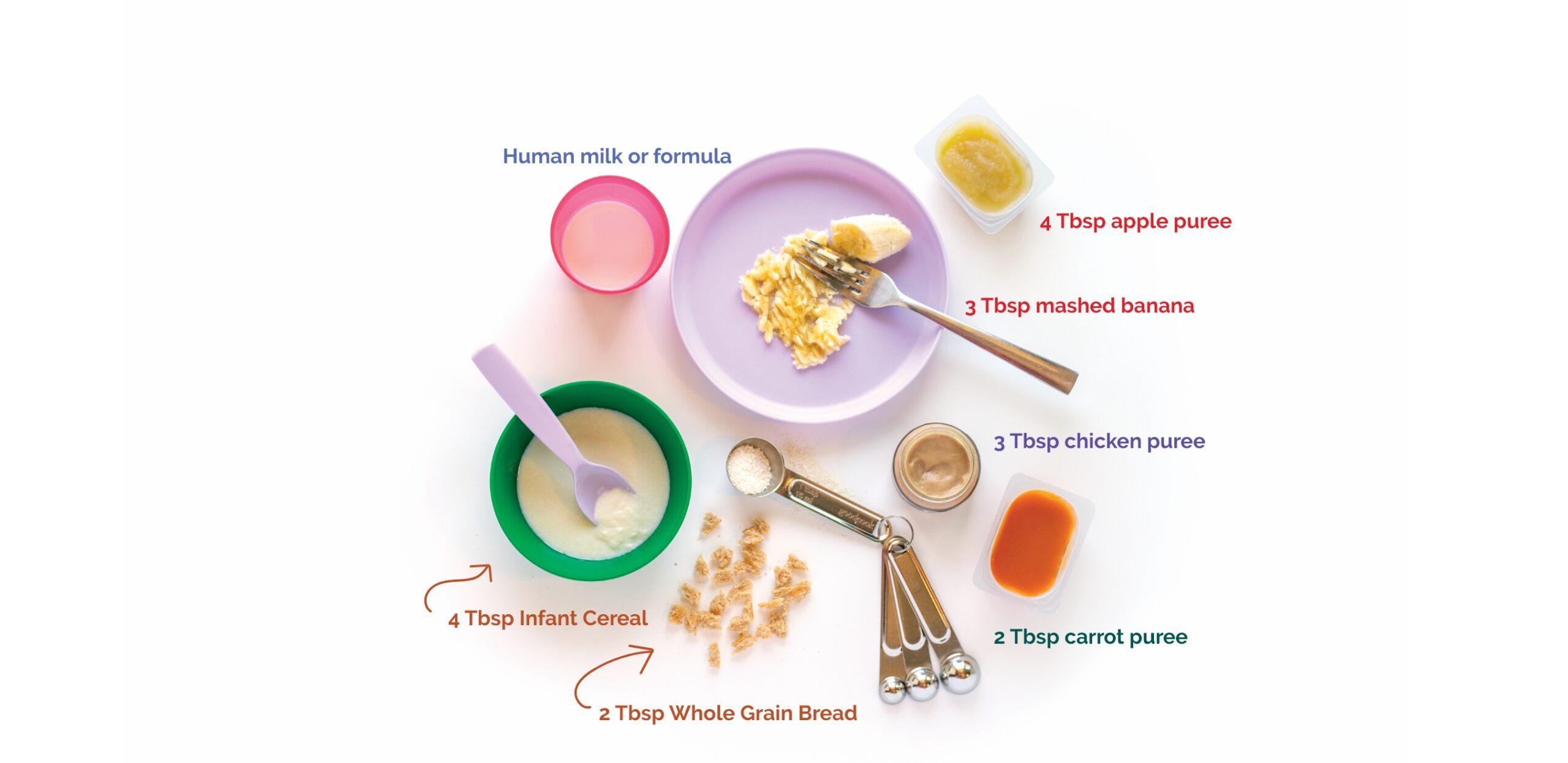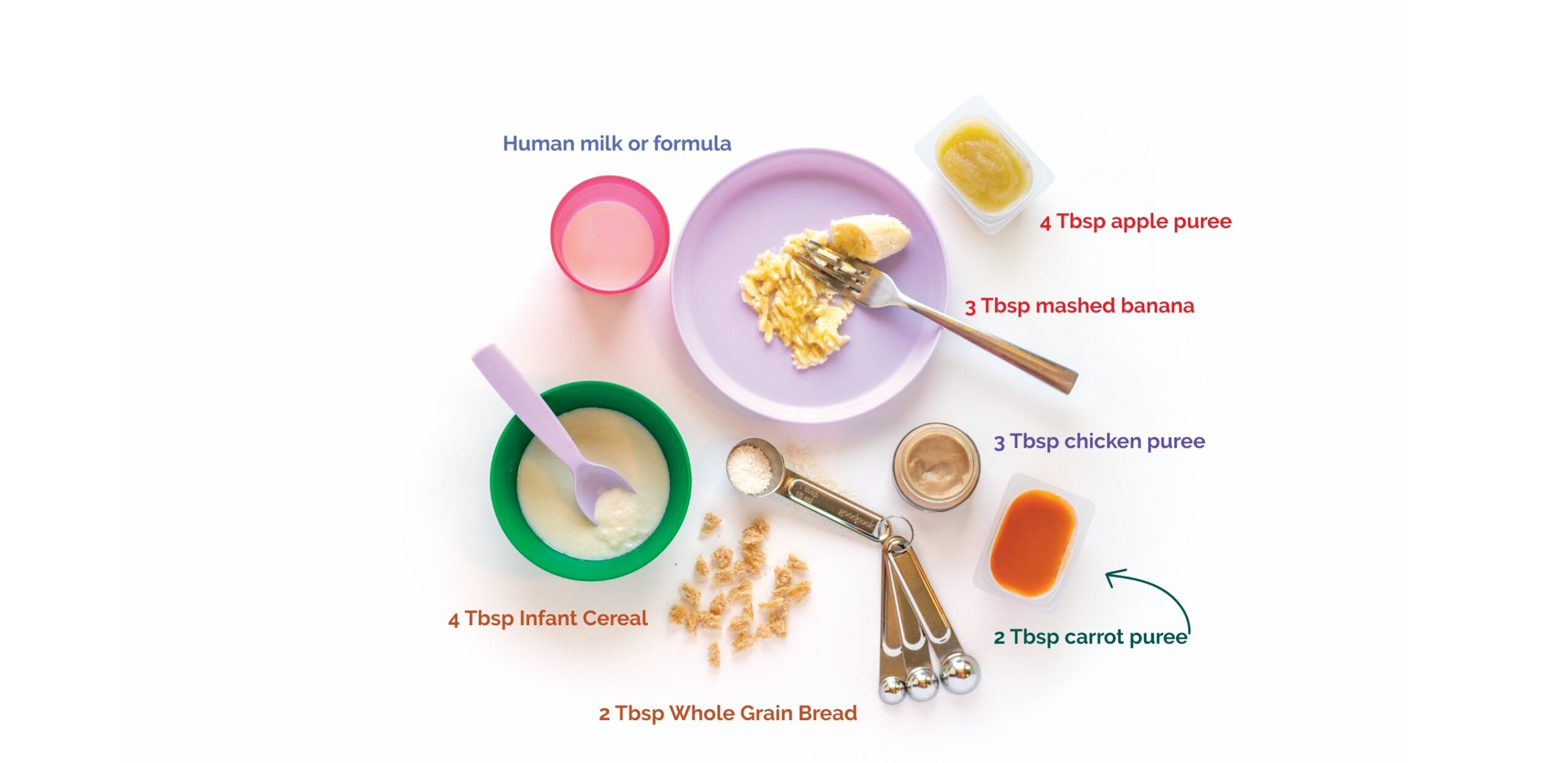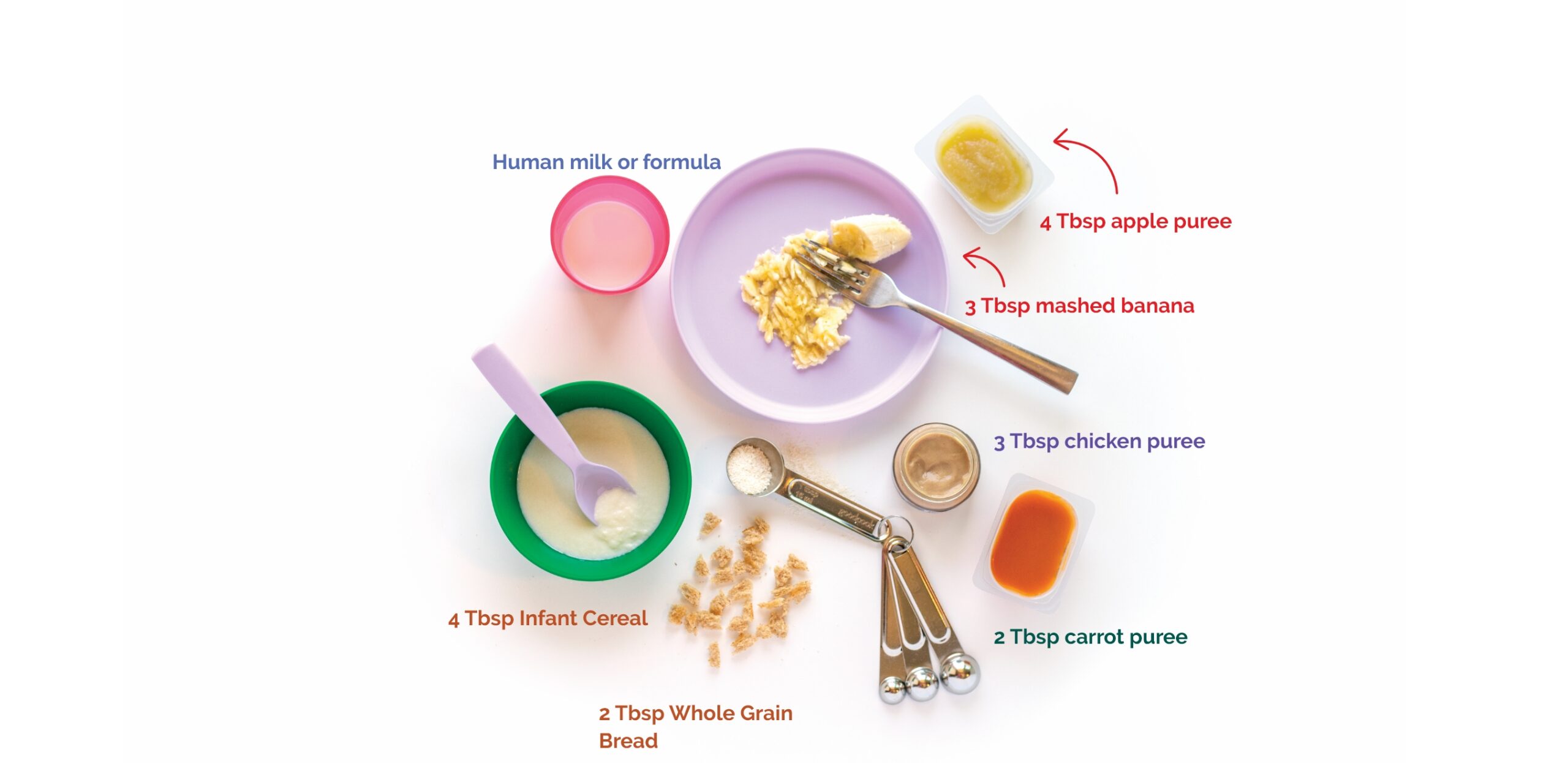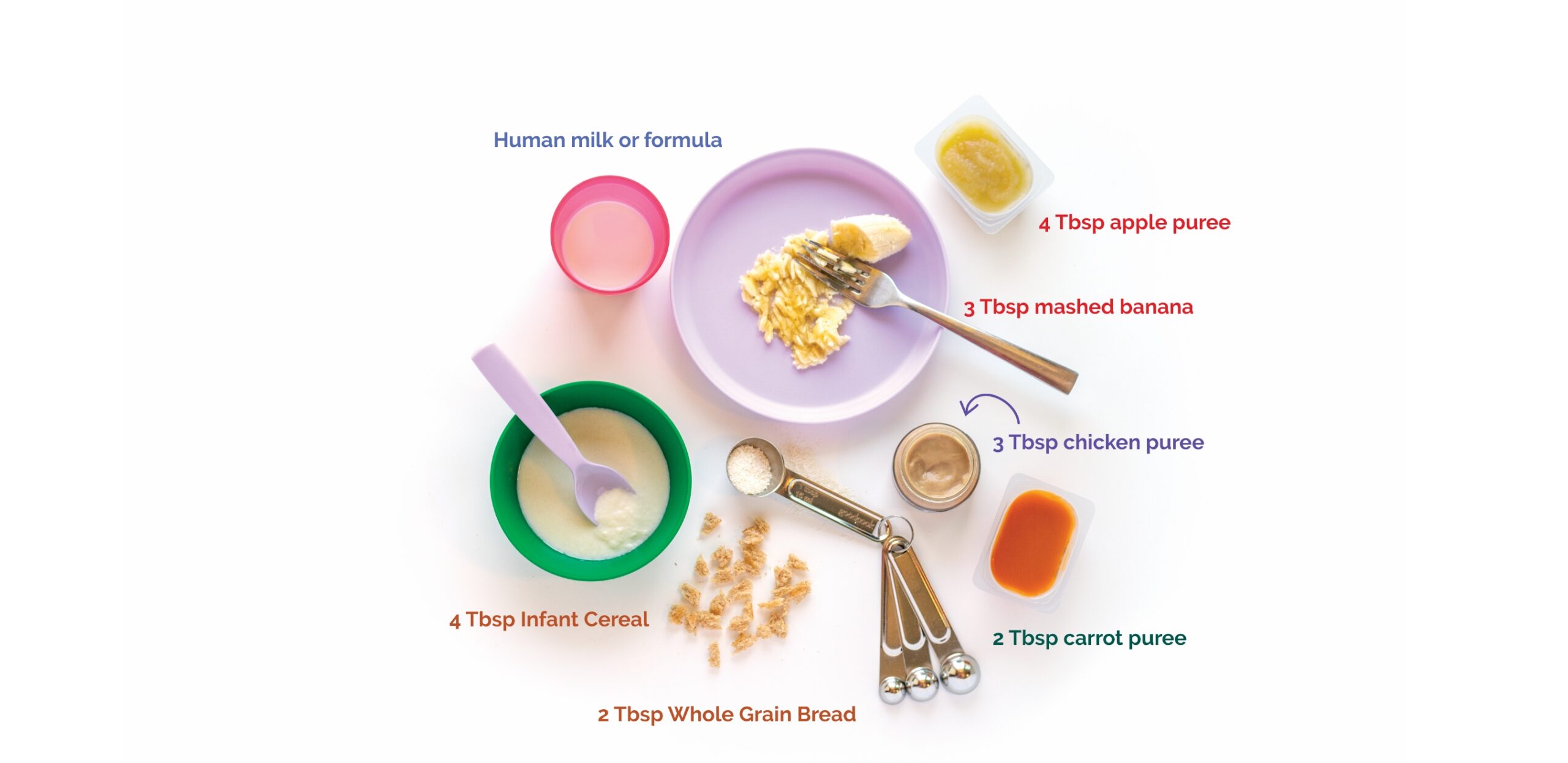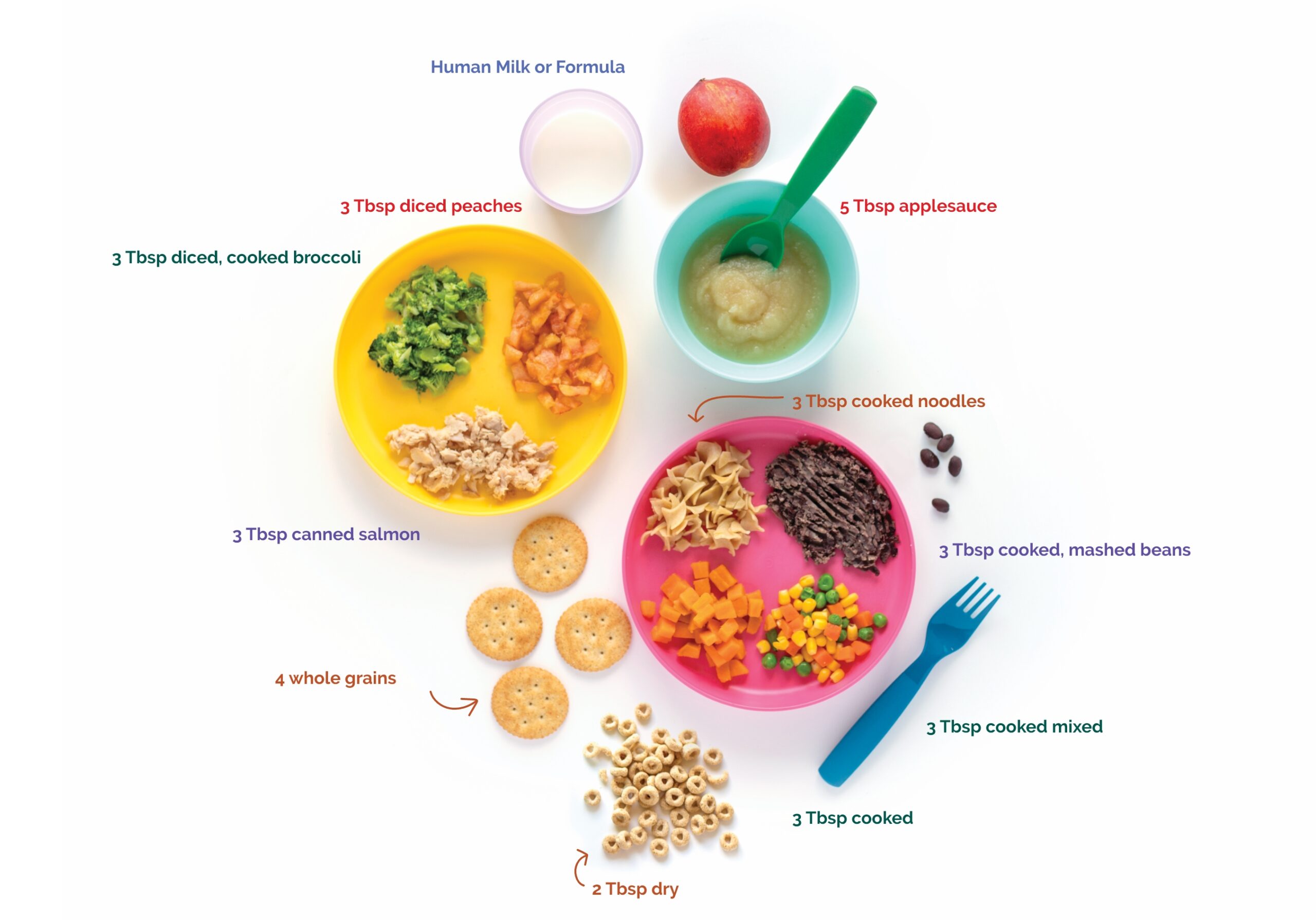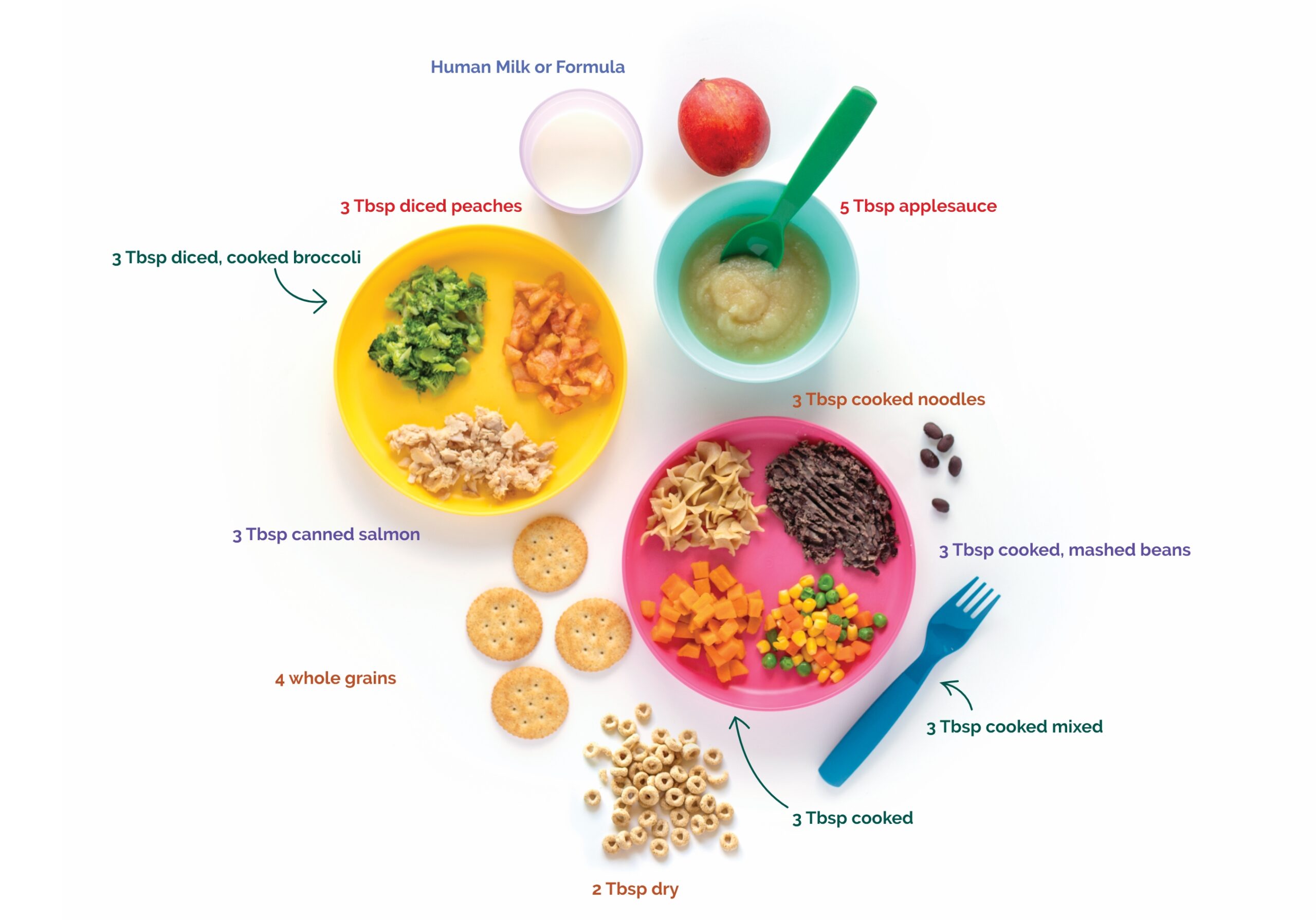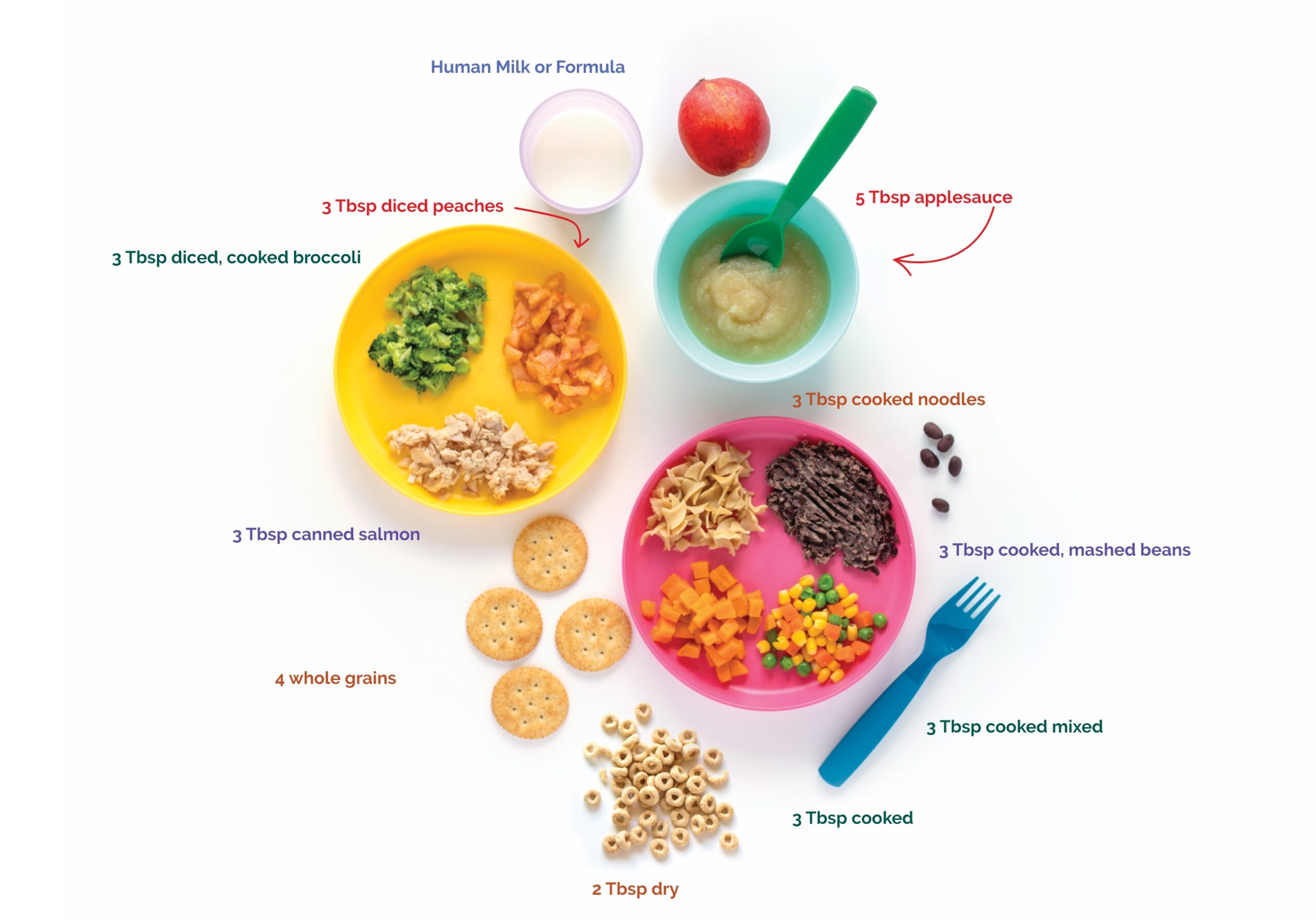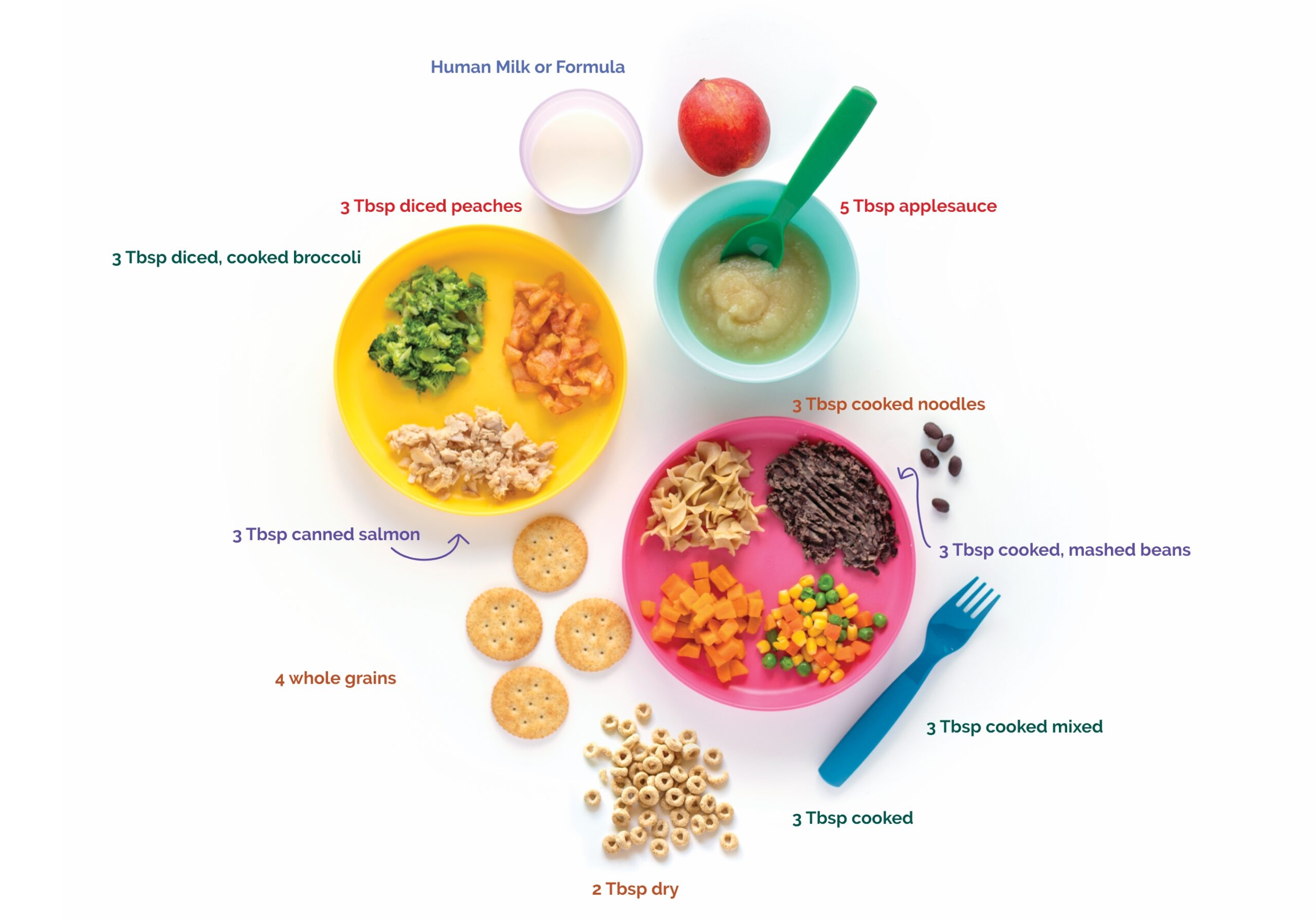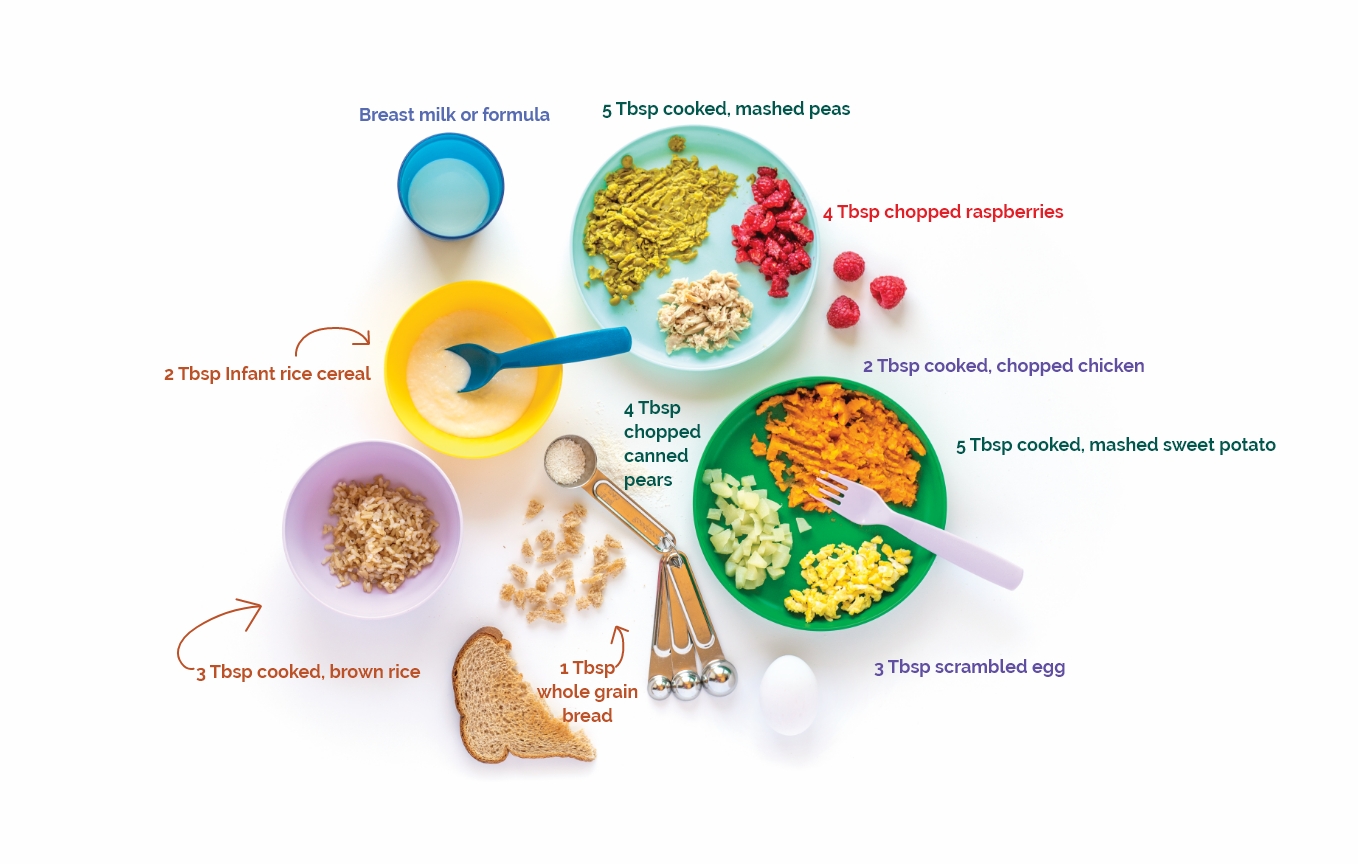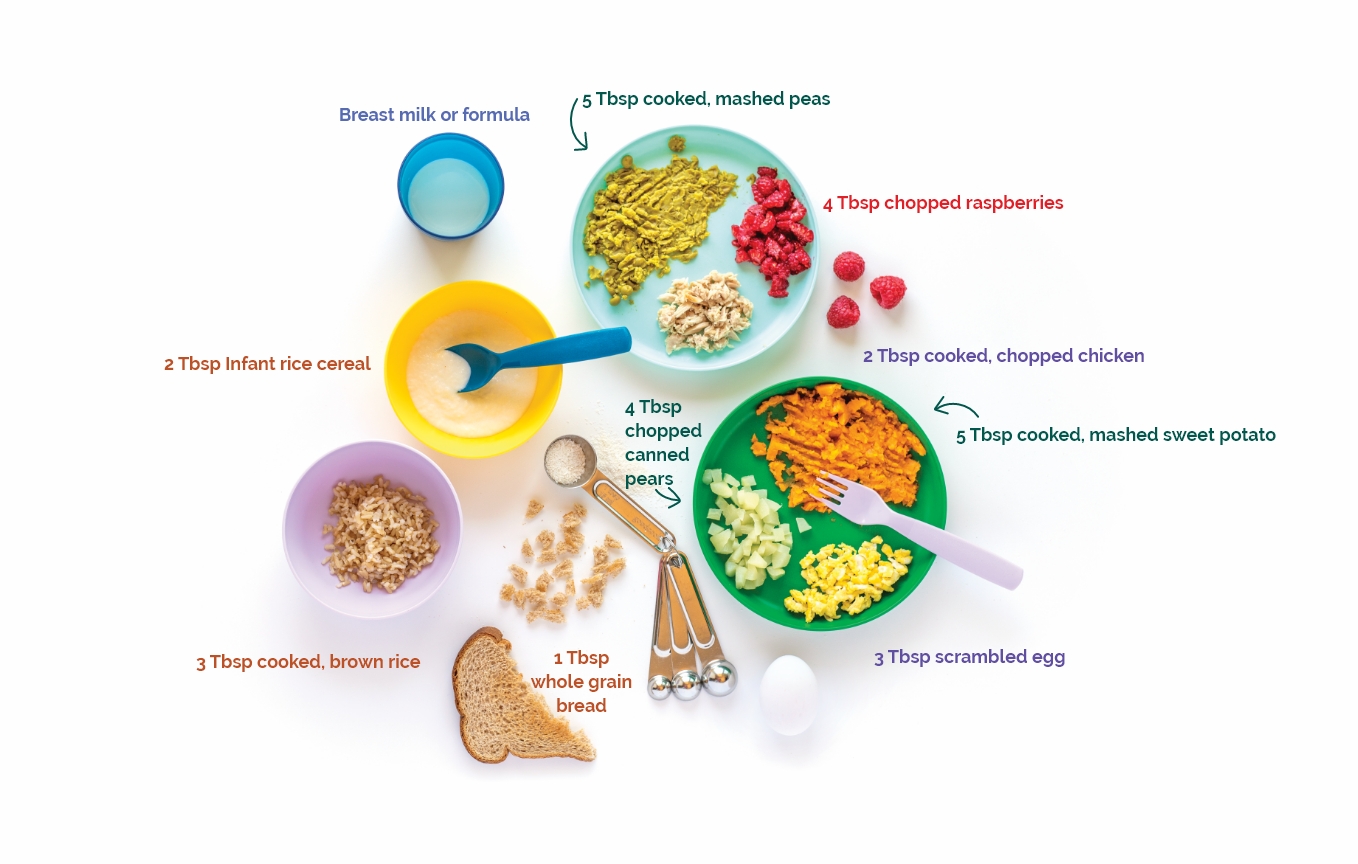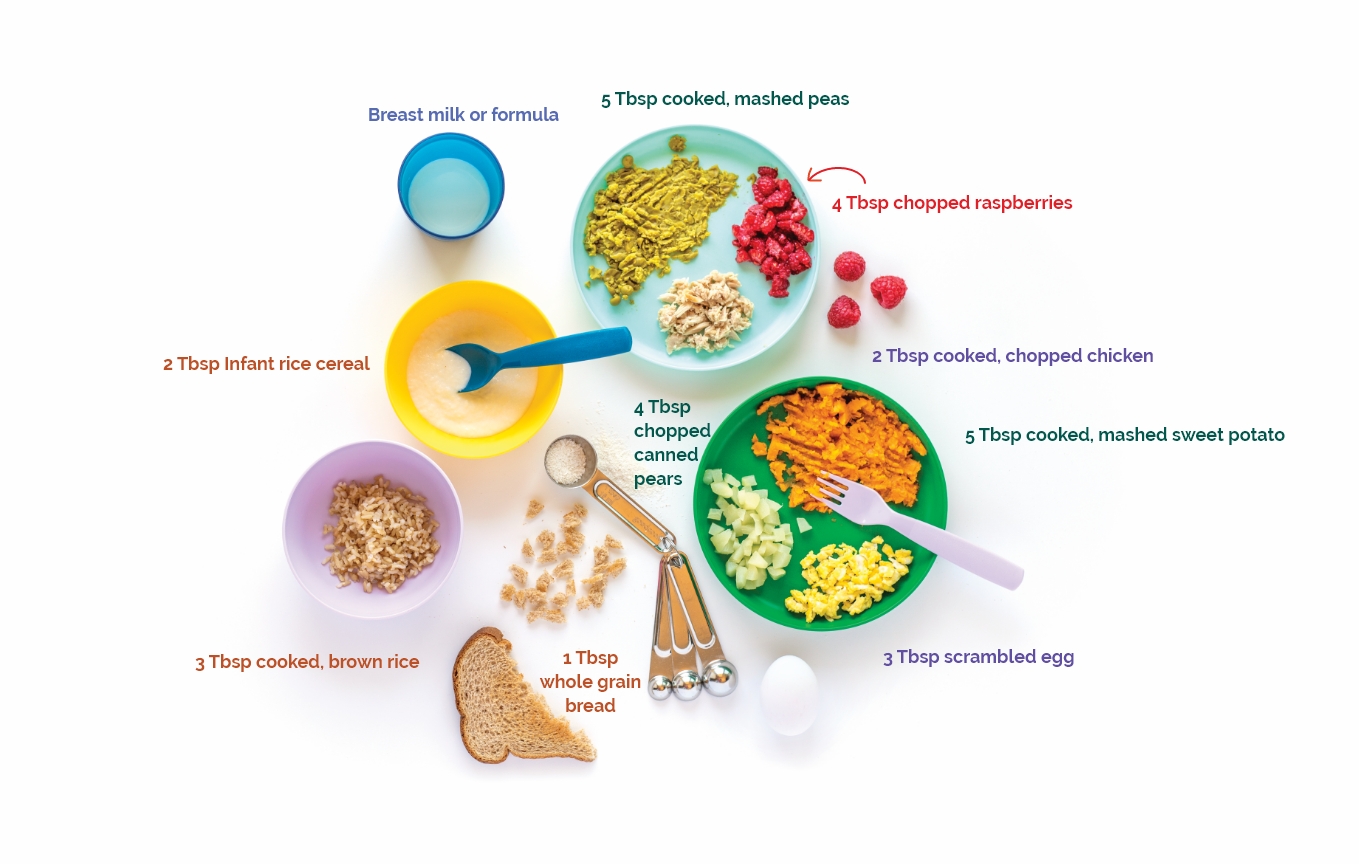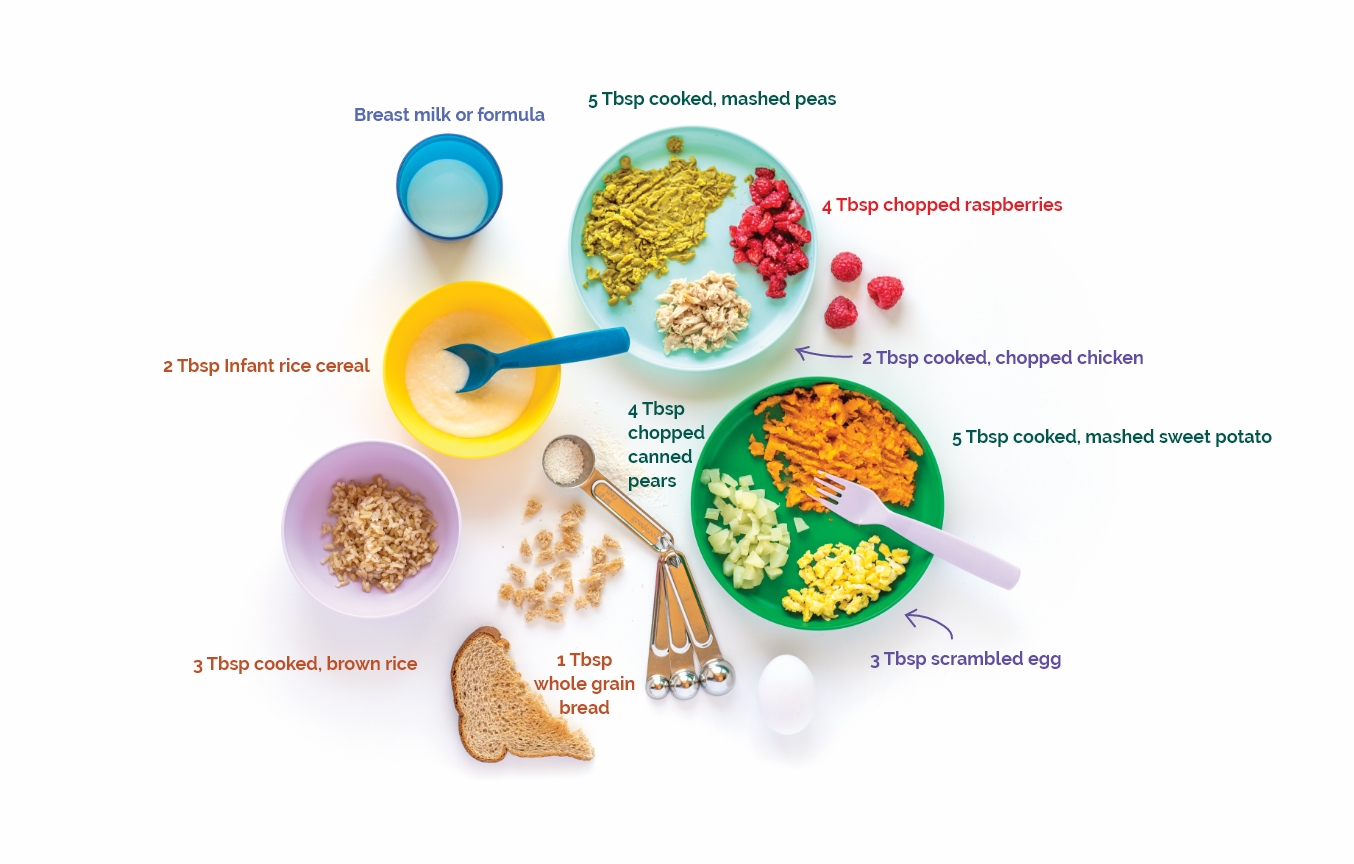I’m ready to learn how to eat most of the foods you do.
WHAT
- Offer small servings of several foods that are easy for me to eat.
- I need soft, tender, and moist foods like cooked vegetables and soft fruits.
- I still love to come to the breast to breastfeed but expressed breast milk in a cup is great too!
HOW
- Offer me foods from a small plate or bowl.
- I want to choose if I use my fingers or my spoon. Please be patient if I am messy.
- Cut my food into small, bite-sized pieces no bigger than your thumbnail.
WHEN
- I do best with 3 meals (breakfast, lunch, dinner) and 2 or 3 snacks. Let’s eat at the same times every day.
- I only need water between meals and snacks. This way I will be hungry – but not too hungry – when it is time for the next meal or snack.
WHERE
- Eat with me. I need your help and I learn a lot during family meals. Our time together is special. I feel so loved when you pay attention to me.
- Let me eat at the table with everyone else. I need to be safe, sitting up, supported, and buckled in a highchair.
Here are some examples of what meal and snack portion sizes might look like on my plate.
Breakfast
¼ cup diced kiwi
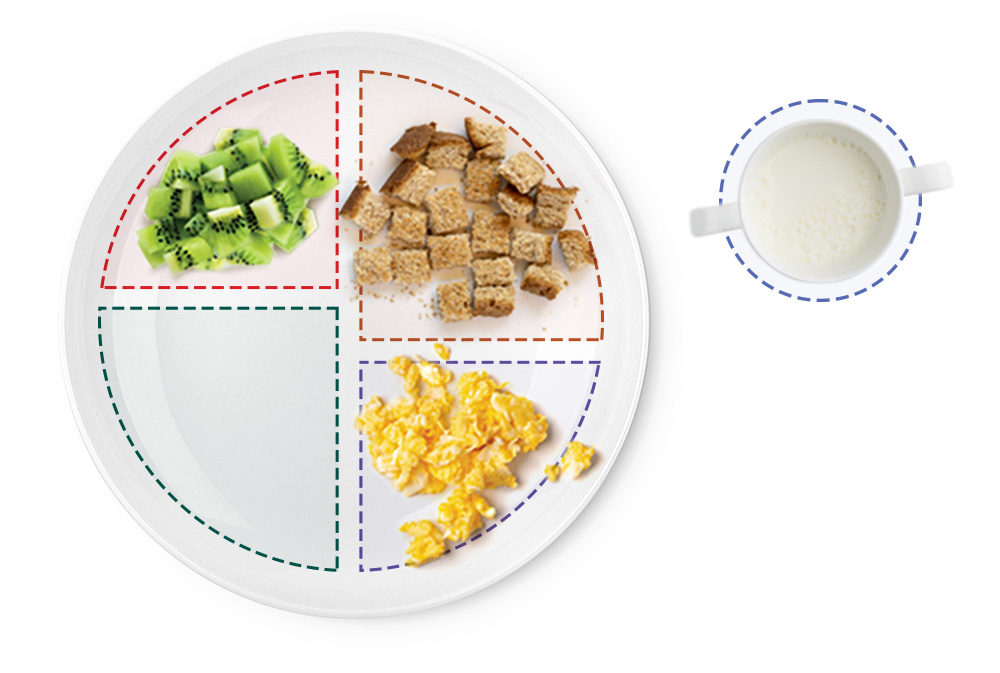
½ slice, cut up whole grain toast
½ cooked, cut up egg
½ cup breast milk or whole milk
Lunch
½ medium, sliced banana
½ cup cooked, chopped green beans

¼ cup cooked brown rice
½ cup breast milk or whole milk
Snacks
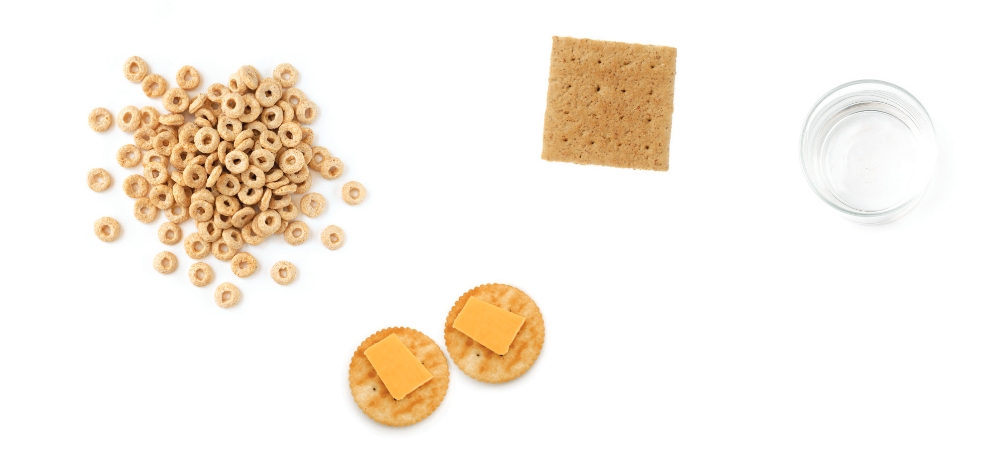
½ cup dry cereal
2 to 3 whole grain crackers with cheese
½ graham cracker
water between meals and snacks
Dinner
¼ cup diced strawberries
½ cup mashed peas

¼ cup cooked whole grain pasta
2 tablespoons baked, chopped chicken
½ cup breast milk or whole milk
Daily Suggested Food Group Amounts
FRUITS
2 servings a day
1 serving = ½ cup
(1 cup total)
Cooked or soft, raw fruit.
Mashed, sliced, or chopped.
Offer a variety: red, yellow, orange, blue, and green.
VEGETABLES
2 servings a day
1 serving = ½ cup
(1 cup total)
Cooked and mashed, sliced, or chopped veggies.
Offer a variety: dark green, orange, red, yellow, and purple.
GRAINS
6 servings a day
1 serving = ½ ounce
(3 ounces total)
Bite-sized pieces.
Whole grain bread, tortillas, rice, or noodles.
Dry or cooked cereal.
PROTEINS
2 servings a day
1 serving = 1 ounce
(2 ounces total)
Cooked, chopped meat, poultry, or fish.
Eggs.
Cooked, mashed beans, or peas.
Peanut butter.
DAIRY
4 servings a day
1 serving = ½ cup
(2 cups total)
Breast milk (at breast or expressed) or whole milk.
Yogurt.
Cheese.
Look what I can do!
- I can drink from a small, plastic cup at meals and snacks.
- I am learning how to use a spoon.
- I love learning how to walk with you.
- I may know how to say some words. Please read, talk, and sing to me so I can learn more.

Keep me safe and healthy
Please DON’T give me foods I could choke on like whole nuts, whole grapes, seeds, hot dogs, or hard candies.
I need check-ups and shots to stay healthy. I should visit the doctor at 12 months, 15 months, and 18 months.
Brush my teeth twice a day with a small, soft toothbrush and water.
Be with me during screen time and interact with me. Remember, to schedule plenty of non-screen time into my day.
